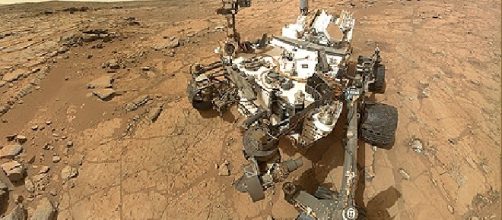As of June 18, 2016, Curiosity has spent 1375 sols (1412 earth days) on the surface of Mars. It landed on the red planet on August 6, 2012. The rover has drilled 12 holes on Mars soil. Its latest sample-12th drilled hole-was made on mudstone bedrock. The rover has performed drills on soft and hard grounds along the route it has followed.
While on the Murray formation, curiosity has examined samples of active sand dunes with its on-board science equipment. On the Naukluft Plateau, it studied the tenth and eleventh scientific targets, analyzing samples around fractures.
It also used its camera equipment to take self-portraits.
Where is curiosity?
After bordering the sand dunes and rolling its wheels through very rough terrain, curiosity robotic rover has made a turn south getting ready to climb the mountain. This mountain seems to possess eroded sedimentary layers, some of these sediments are thought to have been deposited within bodies of water billions of years ago; therefore, scientists think this region is appropriate for the study of habitability.
Murray formation
This region, which measures an estimated thickness of 200 meters (0.12 miles) has been studied to only one fifth its vertical scope. Although this formation did not seemto provide information about its lobg lived lake formations, it has revealed great data about the composition and chemistry of these bodies of water that existed on the Martian surface billions of years back in time.
Latest drilled sample
The most up-to-date sample namedOudamoccurred on the Naukluft Plateau on June 4. The two previous sample drills were performed nearby; however, one within a halo of bright sandstone close to a fracture and the other away from a fracture.
The Stimson formation bedrock is thought to have resulted from wind that eroded a portion of sand dunes and deposited it over lower Mount Sharp. It would have occurred just after the main pile of the lower layers formed and partly eroded. Liquid then found its way through the fractures in the sandstone. Further investigations need to be performed to determine the way in which liquid moved through the fractures and transformed adjacent rock.
Curiosity is studying on Mount Sharp the way in which ancient habitable conditions, known from previous findings, have evolved into the present drier and less favorable conditions for the development of life on Mars.

